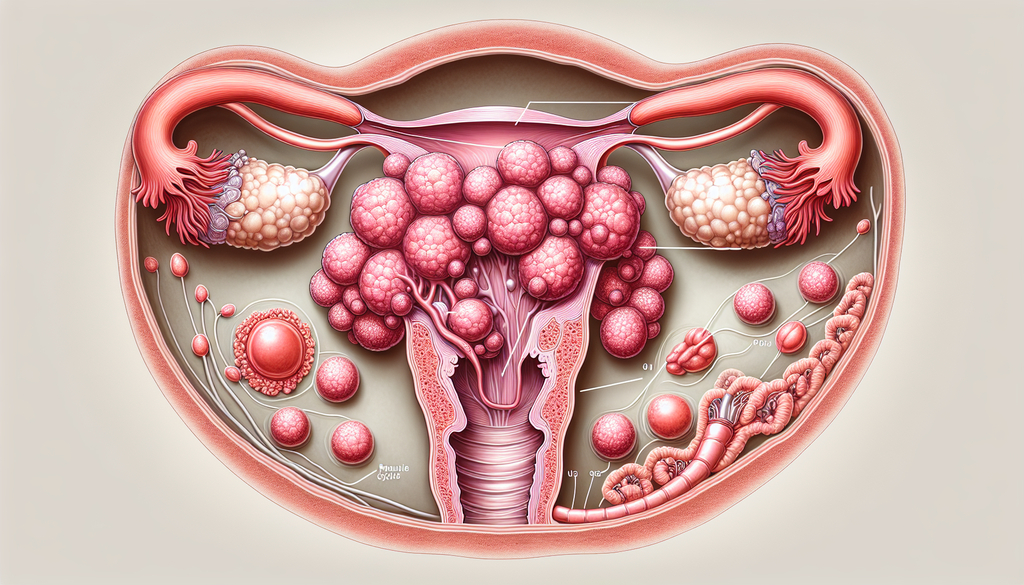Women With Endometriosis Face Increased Risk of Ovarian Cancer

— Elevated risk observed in women with deep infiltrating endometriosis or ovarian endometriomas
A new population-based cohort study reveals that women with endometriosis, especially those with more severe forms, face a heightened risk of ovarian cancer.
Compared to women without endometriosis, those with the condition have an increased risk of developing ovarian cancer (adjusted HR 4.20, 95% CI 3.59-4.91). This risk surge is particularly significant for type I ovarian cancers, such as endometrioid, clear cell, mucinous, and low-grade serous cancers, with a higher adjusted hazard ratio (aHR 7.48, 95% CI 5.80-9.65), according to Karen C. Schliep, PhD, from the University of Utah Health, and colleagues, who published their findings in JAMA.
Importantly, women with deep infiltrating endometriosis and/or ovarian endometriomas had the greatest risk of developing any form of ovarian cancer (aHR 9.66, 95% CI 7.77-12.00).
When examining the overlap between endometriosis subtypes and ovarian cancer types, the study indicated the most significant association appeared between deep infiltrating endometriosis and/or ovarian endometriomas and type I ovarian cancer (aHR 18.96, 95% CI 13.78-26.08).
Still, “elevated risks were observed across all endometriosis subtypes for both type I and type II ovarian cancer [high-grade serous],” the researchers noted.
“Although ovarian cancer remains a relatively rare condition, with only 10-20 additional cases per 10,000 women, the risk is notably increased in women with more severe forms of endometriosis. These women may represent a critical group for targeted screening and prevention efforts,” Schliep shared in a press release. She added, "Precision medicine extends beyond genetics. Clinical traits, such as a woman’s history and type of endometriosis, could refine ovarian cancer risk prediction models."
The authors proposed several biological mechanisms to explain the link between specific endometriosis forms and ovarian cancer types. For instance, endometriosis itself may originate the tissue for both endometrioid and clear cell ovarian cancers.
Furthermore, “emerging studies indicate a shared genetic predisposition linking both endometriosis and ovarian cancers like endometrioid and clear cell,” they wrote.
Conversely, they suggested that oral contraceptives, often prescribed as first-line treatments for endometriosis, could act as a protective factor for women.
An accompanying editorial by Michael T. McHale, MD, from the University of California San Diego, noted, “Early detection of ovarian cancer remains challenging, and existing screening methods continue to fall short, even among women with elevated risks. As a result, many are diagnosed at later stages, which unfortunately correlates with a poor prognosis, though maintenance therapies such as PARP inhibitors have improved outcomes, particularly in women with BRCA1 or BRCA2 mutations.”
McHale supported the study authors’ observations, acknowledging that while the absolute number of additional ovarian cancer cases is modest, "the increased risk is still significant." He suggested that more definitive surgical decisions might be considered, especially for women who have completed childbearing or have other fertility options available.
"This work provides crucial insights into the increased cancer risks specifically associated with certain endometriosis phenotypes, like deep infiltrating and/or ovarian," McHale added. "It's vital that future studies delve deeper into the underlying biology driving this connection and to explore the mechanisms that may facilitate the malignant transformation."
The study by Schliep and her team leveraged the Utah Population Database, which integrates data from vital records, healthcare facilities, the Utah Cancer Registry, and records from the University of Utah and Intermountain Health. Their cohort included 450,906 women, of which 78,476 were diagnosed with endometriosis, and 372,430 were not. Between 1992 and 2019, 597 cases of ovarian cancer were identified via the Utah Cancer Registry.
The average age of women at the time of their endometriosis diagnosis was 36 years, and the average follow-up period was 12 years. Most participants (75%) had given birth, and roughly 6% had undergone a bilateral oophorectomy during follow-up.
Women with endometriosis were more commonly nulliparous (31% vs 24% for those without endometriosis) and were more likely to have undergone a hysterectomy during follow-up (39% vs 6%).
The study found that the elevated ovarian cancer risk translated to 9.90 additional cases per 10,000 women (95% CI 7.22-12.57) over a mean of 12 years. For women with deep infiltrating endometriosis and/or ovarian endometriomas, the risk was highest for all ovarian cancers (adjusted risk difference [aRD] 26.71, 95% CI 20.01-33.41) and type I ovarian cancers (aRD 19.57, 95% CI 13.80-25.35).
Schliep and her co-authors highlighted potential misclassification concerns, due to the absence of a definitive biomarker for diagnosing endometriosis, variations in diagnostic approaches (e.g., surgery vs MRI), and challenges in identifying endometriosis in asymptomatic women or those without access to healthcare.
Disclosures
This study was funded by grants from the National Cancer Institute, University of Utah, the Personalized Health and Center for Clinical and Translational Science program at the University of Utah, and the National Center for Research Resources. Additional support came from the Utah Department of Health and Human Services, the Utah Cancer Registry, NIH, Huntsman Cancer Institute’s Breast and Gynecologic Cancer Center, and the Doris Duke Foundation’s COVID-19 Fund to Retain Clinical Scientists, sponsored by the American Heart Association.
Schliep reported no conflicts of interest. Co-authors disclosed affiliations with Epi Excellence and Epidemiologic Research & Methods.
McHale reported serving as an education consultant for Eisai Training.
Primary Source
JAMA
Source Reference: Barnard ME, et al. "Endometriosis typology and ovarian cancer risk" JAMA 2024; DOI: 10.1001/jama.2024.9210.
Secondary Source
JAMA
Source Reference: McHale MT. "New insights in endometriosis subtypes and ovarian cancer risk" JAMA 2024; DOI: 10.1001/jama.2024.12357.


